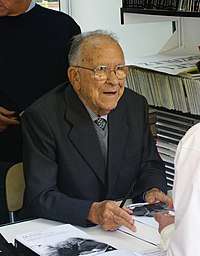Name origins
Carrillo is a Spanish surname. References to the origins of the name dates back to the Kingdom of Castile in the thirteenth century. According to a legend of family origin, two brothers of royalty (their country of origin is unknown; but, it is presumed to have been France) were on a tour visiting foreign lands. Misfortune came upon the brothers when they accidentally killed a courtier of the King of Italy. The brothers had to flee into hiding to avoid the king's rage (it is said that the brothers dueled with the courtier over the honor of a beautiful Spanish maiden). The brothers fled to Spain, and were placed under the protection of The Count of Castile Fernán González of Castile. [1] [2] Legend states that the brothers were strongly loyal to one another, and always traveled together. They were happy in demeanor, and good in nature. Once accepted into Spanish society, the brothers were so grateful that they devoted themselves to a stronger religious and spiritual commitment among themselves, and became very patriotic. The brothers devoted themselves to serve their new country and they pledged their loyalty to the Monarchy of Spain. It is said that when seen together, many would describe the brothers very much like "los carillones de la iglesia" (the carillon bells of a church) as they were always together, and drew bright attention to themselves due to their devoted works, and outspoken dedication to the Crown and Church. Because the brothers' language of origin gave them distinct accents, they called themselves Carrillo (a compromised version of "carillon", and one more easily accommodated by the Spanish language). The brothers endeared themselves to the Castilians, and married two daughters of a noble Count. The count of Castile made it possible to ennoble the brothers and attain the titles of Count of Priego for the elder brother, and Marquis De La Guardia for the younger. All lines of the Carrillo family are said to branch from these two brothers. The name Carrillo also appears in connection with an ancient Spanish legend concerning the Siete Infantes de Lara (Seven Princes of Lara). Through time, the name Carrillo has been subject to several false etymologies and irrelevant definitions, but the legendary story has roots in anecdotal evidence and tradition. The meaning of the surname Carrillo is derived from both definitions of "carillones" in Spanish and "carrillon" in French.
The surname "Carrillo" is first found in Castile, Spain, in Burgos, Palencia, Soria, Logroño, Navarre, and Andalucia. Family members later went off to help in the conquest and establishment of colonies outside Spain, and included Cuba, Puerto Rico, Mexico, Venezuela, Costa Rica, Colombia, Chile, Philippines, Argentina, and the United States of America, particularly California.


